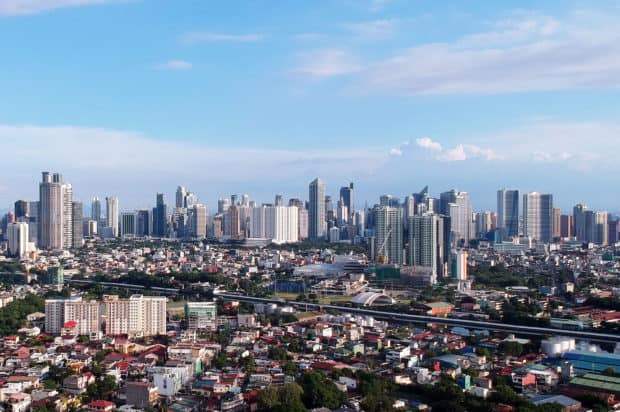
“Change is not afraid to disrupt and unsettle what is believed to be established, even the seemingly optimistic future of the real estate industry for 2020.”
This was how Enrique Soriano III, executive director at Wong+Bernstein Advisory, summed up his talk on Jan. 22 at “State of Real Estate: A Clear Vision for 2020,” a well-attended forum organized by Inquirer Property.
“The sector has been on an extended run for 10 years, and anything that goes up must come down soon. It is just a matter of time,” he added.
Boy, was he right. The COVID-19 pandemic sabotaged an upward trajectory for the real estate industry. The sector ground to a halt in March and is getting its bearings only late in 2020.
Soriano recalled parts of his cautious address during the third leg of INQclusive, a webinar series specially arranged for the leading daily’s 35th anniversary on Dec. 9.
In “The Real State of Real Estate: Primer for 2021,” moderated by Inquirer Property editor Theresa Samaniego, Soriano reunited with Richard Raymundo, managing director of Colliers International Philippines, who had also spoken at the Jan. 22 event.
Contrasting with the in-person Manila Polo Club event, this primer was a virtual event filled with instructions to weather a downturn and capitalize on opportunities.
Pogo departure
One striking change was the departure of a once-vibrant Philippine offshore gaming operator (Pogo) industry, which virtually “dried up,” according to Raymundo. What abruptly raised real estate values in the past years now leaves a vacuum in Metro Manila.
The departure of Pogo workers from the capital left 154,000 sqm in office spaces, with bulk of the vacancies in Quezon City, the Bay Area and Alabang.
Vacancies are expected to more than double from 4.3 percent last year to 9.1 percent as this year winds down, according to Colliers. Aggravating the low uptake was a business climate that was largely “wait-and-see” plus a business process outsourcing (BPO) industry that allowed work-from-home arrangements for 60 to 70 percent of the workforce.
As new spaces open, vacancies are forecast to go up to 11.6 and 12.1 percent for 2021 and 2022, respectively.
The Pogo exit also adversely affected residential spaces, noted Raymundo. “The higher office vacancies mean there’s less demand for condos, residential, in these business districts.”

Demand, vacancies
In the beginning of the year, Colliers projected a 7.5-percent annual growth from 2020 to 2022, mainly because of Pogos. However, take-up may drop by 7.7 percent in 2020, while for the next two years, growth may be slow at 2.5 percent. Metro Manila vacancies may reach 15.3 percent by end-2020. In the first nine months of 2020, developers launched only 16,000 residential units in contrast to last year’s 49,000.
Vacancies in retail is seen to reach 14 percent by yearend as stringent lockdowns closed businesses for months. Colliers also found that foot traffic decreased by 30 to 50 percent compared to pre-COVID-19 levels.
Price adjustments
These drastic changes forced price adjustments across the spaces. For new contracts in offices, rents now provide negotiating legroom of 15 to 25 percent.
Prices dropped in residential units, too. For luxury condos, a 13-percent price drop was recorded. The affordable to mid-income projects have been sold at a 16- to 20-percent discount. Downpayments went from 30 to 20 percent—or none. Developers extended payment terms, waived reservation fees and provided rebates and other rewards.
In retail, developers have become lenient, providing 30-day grace periods on rent and up to 50-percent drops.
Raymundo also noted a “most preferred” option: “A lot of the developers have waived the fixed rent and are now helping their tenants with just the percentage of sales for their rental.”
Landmine of opportunities
This slowdown is a landmine of opportunities, noted Soriano. Harking back to his talk in January, he said, “I’m not an expert in predicting events but I know I mentioned this in my slide: that real estate organizations will need to make sure they have the right capabilities and qualities.”
“…[I]f you do not do your homework, then definitely you will lose out not because of the pandemic but because of your own complacency,” he added. The sector must ride the digital wave “from understanding buyers to digitizing sales to converting inquiries to transforming happy and engaged homebuyers and tenants.”
The real estate industry should also mold itself into a human-centric business, selling experiences—not four walls—to a customer base that has become more discerning and demanding because of the lockdowns.
“The key is to engage buyers, dive deep into their expectations, stay close to them and anticipate their needs… It’s no longer about aesthetics and how to conserve energy,” Soriano said. Among others, there has been a growing desire for in-city homes with green spaces and homes in peripheral areas with larger spaces, especially for workstations.
Looking at the current numbers, both experts noted that we’ve been through worse. Raymundo recalled the 1997 Asian financial crisis, when prices and vacancies skyrocketed, and effects lingered for years. Soriano admitted worrying about a “doomsday” looking at numbers from March to April. However, conditions did not allow the stalemate to equal the Asian crash and the economic plunge leading up to the People Power Revolution.
Recovery drivers
Logistics may lead the recovery in 2021, Raymundo said. The boom in e-commerce and delivery services during the COVID-19 lockdowns could help ensure growth.
Residential spaces go second, Raymundo forecasted, basing on activity in the affordable market and the “sweet spot” middle-income segment. At 25,000 units, takeup for the three quarters of 2020 overwhelmed the 16,000 units launched, an indication of good demand. Following in his listing are office and retail spaces. The hotel sector could become a laggard.
Both panelists encouraged developers to launch products and test the market.
“From many that I had the opportunity to engage with, especially in Asia, yes the worst is behind us,” assured Soriano. “Revenues are still far from pre-COVID-19 levels, but the signs are pointing north.”
“You don’t need a huge launch right now,” said Raymundo. “What you need is to get your product to the right people, through the right channel. The ones who started pivoting through Facebook, Instagram, who were very nifty on how they dealt with their brokers, they did very well.”
Embracing innovations
Calling real estate “one of the most low-tech industries,” Raymundo called on developers to embrace innovations such as logistics, cloud-based touchpoints, payment methods and cybersecurity.
“You need a system that helps you up to the handover; documentation needs to be faster,” Raymundo said. He also saw flexible payment terms as a must. These improvements foster loyalty and repeat buys, factors that have contributed to resilient sales even amid recessions.
The World Bank estimates that the Philippines will enjoy a GDP growth of between 2.9 and 5.3 percent in 2021. In the recovery that will ensue as the vaccine comes along, Soriano asked the sector to prepare for a “pent-up demand” among consumers who had been cooped up for months. Businesses could respond right now by familiarizing with the market, improving on efficiency and ensuring quality service.
Developers, Soriano and Raymundo also noted, cannot at any point forget brand equity, the assurance that they are delivering trusted, high-quality products.
“For every pandemic, for every crisis, there are opportunities,” said Raymundo. “And the companies that are able to spot these opportunities and capitalize on these quicker are the ones that come out stronger and bigger eventually.”
#realestateblogph | #realestateblogphpropertynews | #REBPH | #realestate | #realestate2021 | #stateofrealestate | #realestateoutlook | #realeastateforecast
Article and Photo originally posted by Inquirer last January 12, 2021 3:40am and written by Vaughn Alviar.







More Stories
Vista Land Celebrates 50 Years with Sandiwa: An Event Honoring Leadership, Legacy, and the Filipino Dream of Homeownership
Vista Land Celebrates Love Month in Ilocos Region
Vista Land Bridges Cebuano Heritage and Progress with Valencia by Vista Estates